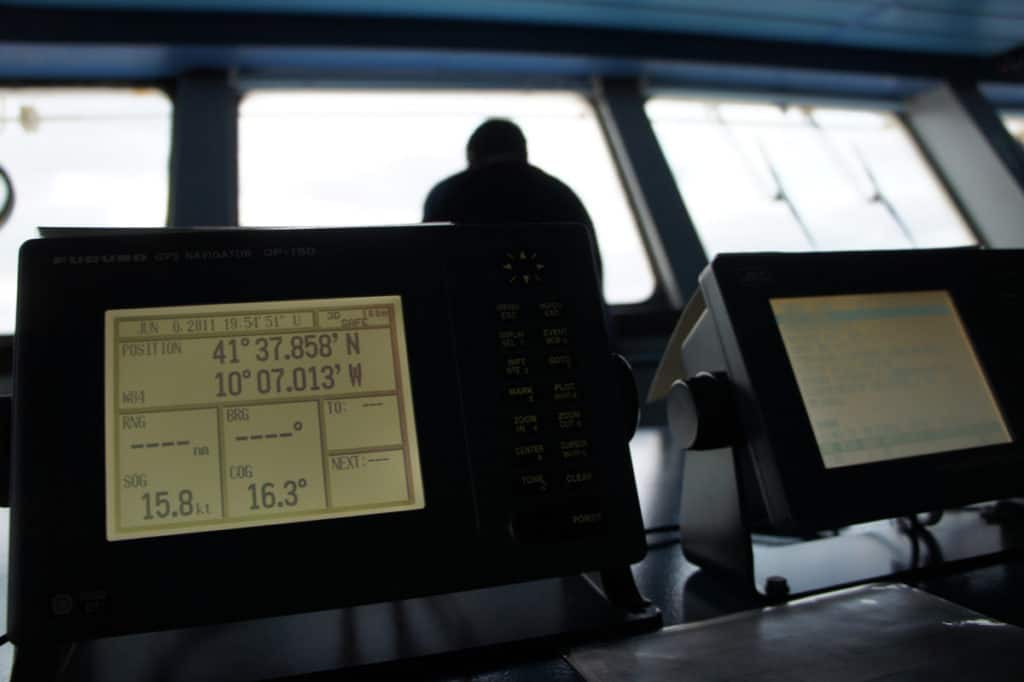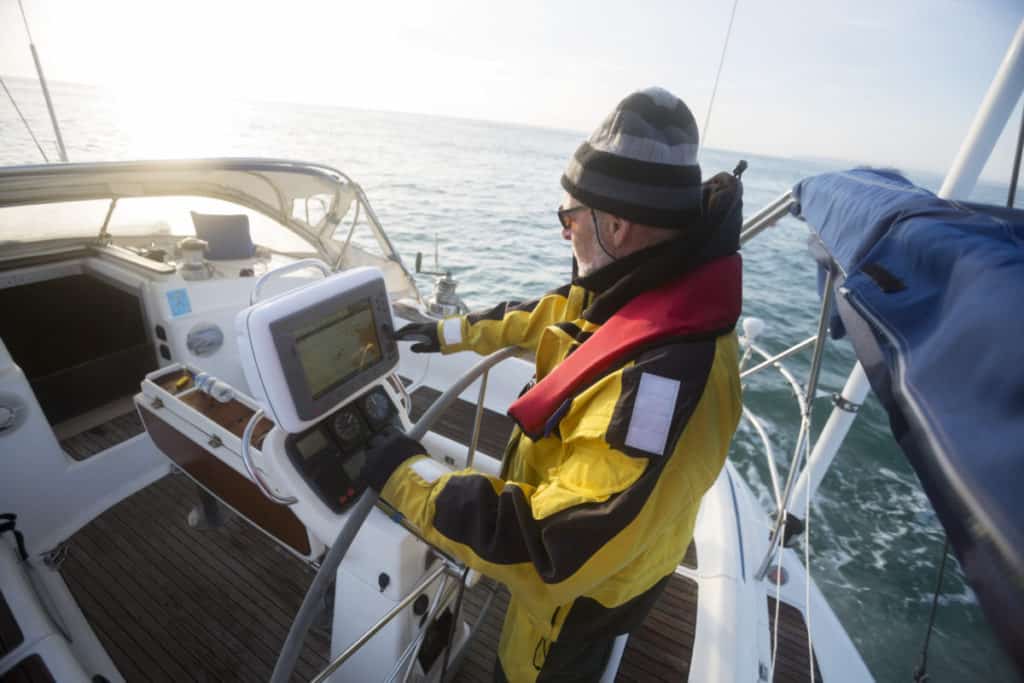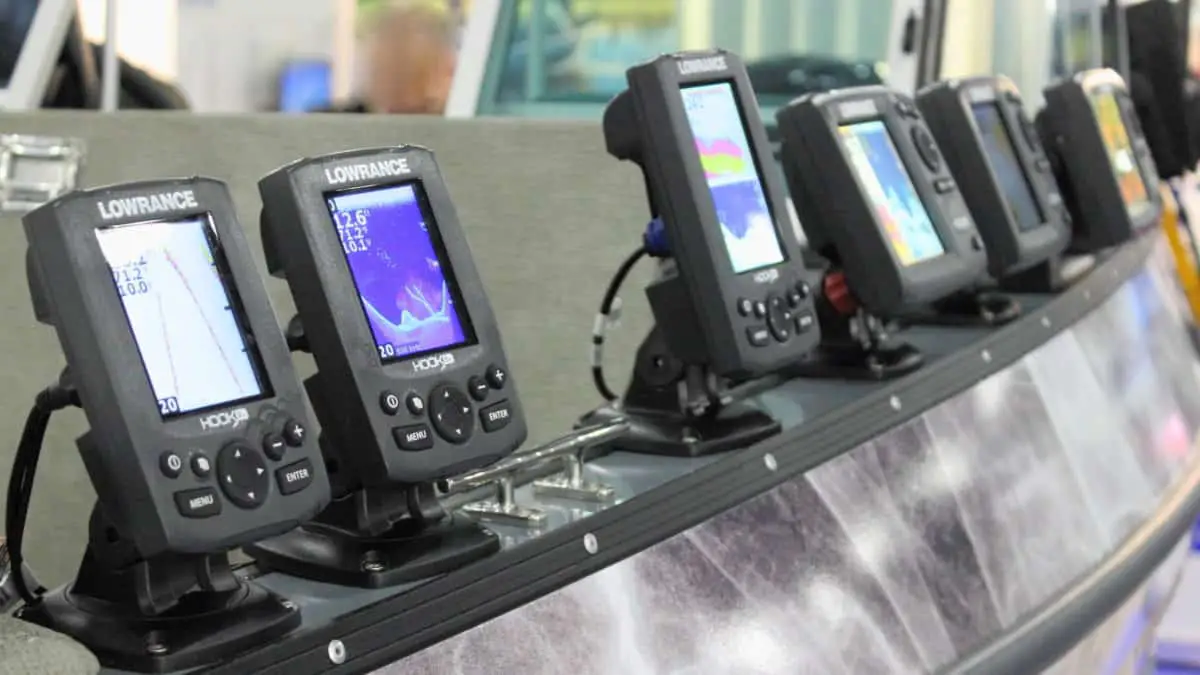As an Amazon Associate, we earn from qualifying purchases. We may also earn commissions if you purchase products from other retailers after clicking on a link from our site.
Chartplotters give you vital information about your location while you’re out on the water. If you’re in the market for a new chartplotter, you might wonder which one is most suited to your needs.
The best chartplotter for sailing is the B&G Vulcan Sailing Chartplotter. It offers multiple features (such as a race panel, wind and depth instruments, and autopilot) to make your sailing experience fun and effortless.
The instances in which I wouldn’t recommend this chartplotter are as follows:
- You’re on a budget. Opt for the Simrad Cruise 5-Inch GPS Chartplotter (available on Amazon.com)
- You want a chartplotter with a basic interface. Choose the Simrad G09 XSE 9-Inch Chartplotter (available on Amazon.com).
- You need a compact chartplotter. The Si-Tex SVS-560CF Chartplotter (available on Amazon.com) is a better option.
- You need a chartplotter with an in-built transducer. Get the Garmin ECHOMAP CHIRP 74cv Chartplotter (available on Amazon.com).
In this article, I’ll discuss the nine most respected chartplotters for sailing, taking into account various factors.
Full disclosure: most of the chartplotters in this article I have not used myself. This post is based on my research (interviews, websites, etc) in preparation for buying a chartplotter for my boat.
Best Marine Chartplotters
Are you looking for a good chartplotter? Since everyone has unique needs, I’ve evaluated the best chartplotters according to categories:
Best Overall: B&G Vulcan Sailing Chartplotter
Some sailing enthusiasts prefer to use the most respected chartplotter brands, and B&G has always been a brand with an excellent reputation.
Their Vulcan 7 chartplotter has everything you need for effortless navigation:
- Race panel
- Wind and depth instruments
- Complex navigational calculation ability
- Autopilot
- Enhanced capability (if you include a transducer)
Pros
- Value for money: The B&G’s Vulcan 7 chartplotter is not cheap and will cause you a couple of hundreds of dollars. Still, it offers superb value for money as it’s packed with features, such as updated weather information, autopilot, nautical charts, and Broadband Radar.
- Two screen sizes: This chartplotter’s standard screen size is 7 inches, but you can buy a 9-inch (23 cm) one for increased legibility.
Cons
- Takes a while to learn how to operate it: It’s easy to operate once you get to grips with the Vulcan 7’s advanced features. However, it can take a while to learn how to fully use it as the system is complex.
- Unsuitable for those on a budget: This chartplotter offers you a lot of bang for your buck, but its high price may be unaffordable if you’re on a budget.
Cheapest: Simrad Cruise GPS Chartplotter
Are you looking for a cost-effective chartplotter that can easily fit in a backpack and one that also offers excellent functionality? The Simrad’s Cruise 5-inch (12.7 cm) chartplotter has a small screen, is lightweight, cost-effective, and is easy to use.
It offers excellent value for money as it comes preloaded with US coastal maps. You can also download your own charts from platforms like Insight Genesis, C-MAP, Navionics, and more.
Pros
- Compact 5-inch screen: The compact 5-inch (12.7 cm) screen is ideal if you need an easy-to-carry chartplotter!
- Cost-effective price: The Simrad’s 5-inch (12.7 cm) chartplotter is especially great for travelers who are on a budget.
- Simple interface: If you enjoy using a no-fuss chartplotter, this one should be a consideration.
Cons
- Limited zoom function: This chartplotter doesn’t allow you to zoom in extensively on locations like other models.
- Bulky casing: Although the 5-inch (12.7 cm) screen is wonderfully compact, some users find the casing too big and bulky.
Best for Racing: B&G Zeus3S Sailing Chartplotter
If you regularly race, you need a chartplotter with a race panel. It allows you to view the race timer, the course before you, and any changing weather conditions ahead of your competitors.
The Zeus3S chartplotter (available on Amazon.com) comes with all these features and works seamlessly in all weather conditions.
Pros
- Fast and advanced operating system: With its high-tech processor, you can easily load lots of charts and run radar and other essential controls simultaneously.
- Easy to use in all weather conditions: You can easily view information on the screen in bright sunlight and through polarized sunglasses. The screen can withstand sea spray and is durable enough.
- Excellent features for racing: The Zeus3S has a race panel and SailSteer to give you immediate and updated information on all aspects of the race.
Cons
- Pricey: The 9-inch (23 cm) Zeus model comes with all the bells and whistles and everything you need to win regattas, but it will set you back at over a few thousand dollars.
Best Software: Raymarine Axiom 7 Fish Finder
Raymarine’s Axion 7 Fish Finder (available on Amazon.com) is technically not a chartplotter, but its high-speed quad processor and built-in Navionics charts make it a top consideration for sailing.
This unit’s advanced software and unique Raymarine applications can help even professional sailors navigate effortlessly.
Unlike other chartplotters, this fish finder comes with a transducer, making it worth the price of a couple of hundred dollars you can expect to pay for it.
Pros
- Advanced software: The advanced software contains countless Navionics charts, and you have free access to Raymarine’s specialized fishfinding and navigation apps.
- Large and intuitive touchscreen: The Raymarine Axiom 7 Fish Finder has a large, intuitive, and high-definition touchscreen that displays information clearly.
- Fast operating system: The modern quad processor means no lag when using the unit.
Cons
- Expensive: Most sailors and fishing enthusiasts would agree that spending a couple of hundred dollars on this fish finder is worth it due to the advanced software and built-in transducer. However, it may be too expensive for many occasional sailors.
- Time-consuming to get familiar with the Raymarine apps: Raymarine’s exceptional apps can help you find advanced navigational information and enhance your sailing experience. Unfortunately, it can take time to learn how to use them.
Easiest To Use: Simrad G09 XSE Chartplotter
If you love sailing, you want to spend as much time as you can enjoying being on the waters and limited time navigating and operating your chartplotter.
The Simrad G09 XSE 9-inch (23 cm) chartplotter (available on Amazon.com) has a large touchscreen for clear visibility and a simple interface. It comes with C-MAP Discover, and you can also mirror the screen with your smartphone or tablet.
Pros
- User-friendly: This chartplotter has well-laid-out applications and clear sections for ease of use.
- Large and easy-to-read touchscreen: A simple glance at the large touchscreen is all you need to view your crucial navigational information.
Cons
- Doesn’t come with a transducer: You can add a transducer to this device, but it will cost extra.
- Expensive: Some users question if spending just shy of $1000 is worth this device’s simplicity.
Most Versatile: Lowrance Elite FS Series Fish Finder
Do you want a chartplotter that works well on the water for fishing and sailing but is equally as good when hiking and biking? If so, your best bet would be a versatile, three-in-one device.
The Lowrance’s Elite FS Series Fish Finder (available on Amazon.com) works incredibly well for marine navigation due to its mapping options with Navionics and C-MAP. And its FishReveal technology makes fish finding easy.
You can use it for accurate navigation when biking, hiking, and more on land.
Pros
- Multi-purpose: You can use this fish finder for marine navigation, fishing, hiking, biking, etc.
- Ergonomic touchscreen: The touchscreen is clear and easy to read, even with polarized sunglasses.
Cons
- Costly: This is not a cheap navigator. It can cost over $1000. But you can justify the high price if you use it for multiple purposes.
Best for Small Boat Owners: Garmin Waterproof Marine GPS and Chartplotter
If you have a small boat and you don’t take it too far out on the water, a compact and straightforward chartplotter is perfect.
The Garmin GPSMAP 78sc chartplotter (available on Amazon.com) is a handheld model with all the features you’d expect from a Garmin navigational tool:
- Advanced coastal charts with excellent attention to detail
- High-quality GPS
- Accurate and up-to-date software
Pros
- Compact: With its 2.6-inch (6.6 cm) screen, Garmin’s GPSMAP 78sc chartplotter is only 6 inches (15 cm) high and fits comfortably in your hand.
- Waterproof: This chartplotter is waterproof and will also float if you accidentally drop it in the water.
- Simple interface: There’s nothing complicated about this chartplotter, and it shouldn’t take you long to learn how to operate it.
Cons
- Prone to error messages: Some users report receiving error messages when using some of this chartplotter’s advanced features.
- Sluggish operating system: This chartplotter’s processor is acceptable but not lightning-fast, making it frustrating to perform complex requests.
Best for Fishing and Sailing: Garmin Echomap Chirp Chartplotter
Some chartplotters work well at helping sailors with navigation and also helping fishing enthusiasts find the next big catch.
Garmin’s Echomap seven-inch screen chartplotter (available on Amazon.com) has a large and intuitive touchscreen and a set of easy-to-read buttons on the side.
This device comes with an innovative GT24 transducer for expert scanning and sonar and has all the coastal charts you need for professional-level navigation.
Pros
- Offers scanning sonar for finding fish: Whether you use the traditional CHIRP sonar or opt for the GT24 technology for more accurate scanning information, finding fish is almost too easy!
- Great all-in-one chartplotter: This unit is known for its advanced fishing scanning functions, but it also makes an excellent chartplotter for sailing and works with Navionics data.
- Optional mount: The mount is non-slip and allows you to use the chartplotter from most surfaces on your boat.
- Large high-definition screen: The 7-inch (18cm) screen displays chart details clearly and in high-definition color, and the casing is slimline enough not to feel bulky.
Cons
- Full features and functions only for US coastal waters: If you enjoy fishing on freshwater lakes or taking your boat outside of US waters, you’ll need to buy an SD card if you’d like it to work fully.
Best Compact Chartplotter: Si-tex SVS-560CF Chartplotter
If space is limited on your boat, and you’re looking for a chartplotter that contains plenty of technology in a small package, then Si-Tex’s 5-inch (13 cm) chartplotter (available on Amazon.com) makes an excellent option.
It allows you to use charts with Navionics and C-MAP and comes preloaded with all the essential North American marine charts.
Although the casing is small, it is well-designed with well-placed ergonomic buttons to make chartplotting effortless.
Pros
- Compact casing and screen: Si-Tex’s 5-inch (13 cm) chartplotter is wonderfully compact. Its screen is small but legible, and the casing is not too bulky or heavy.
- Great on-screen color clarity: With its high-resolution LCD color screen, the screen delivers impressive detail with exceptional clarity.
- Has a fishfinder: This chartplotter also has a dual-frequency fish finder, making it a compact, two-in-one device.
Cons
- Needs to be near the screen to read detailed information: The small, 5-inch (13 cm) screen can sometimes be challenging to read if you’re standing several feet away from it.
- Expensive: You probably have reasons for wanting a compact chartplotter, but you can buy one with a larger screen at a lower price. Spending over $600 probably doesn’t offer good value for money, considering its small size.
What Is the Difference Between GPS and Chartplotter?

If you’re new to sailing, you may wonder if a GPS (Global Positioning System) is the same thing as a chartplotter. So, are chartplotters and GPS the same?
The difference between GPS and chartplotter lies in how it displays a location. GPS displays a location with latitude and longitude coordinates, while chartplotters use your coordinates and display them on a map.
Most people already use basic chartplotters in their daily lives, and typical examples include Google Maps, Waze, and Apple Maps.
Do I Need a Chartplotter?

If you’ve been sailing for many years, you know that most sailors now use high-tech chartplotters instead of traditional paper maps. Are chartplotters really necessary, and should you get one?
You do not need a chartplotter if you are happy using a paper-based or GPS navigation system. There is no law stating that boats must have chartplotters, but they make marine navigation easier and less time-consuming.
If you have a small yacht or boat that you only use occasionally, it may not be worth spending the money on a chartplotter as it can be costly. A compact, budget model, however, may be worth considering.
Sailors with larger boats that they regularly use for racing and leisure could benefit more from a chartplotter. A chartplotter allows sailors to spend less time manually navigating and more time enjoying the experience and concentrating on winning the race.
Key Takeaways
After considering their features, I’ve found the listed chartplotters great for sailing. They shine in different areas, including their overall performance, compactness, low prices, advanced features, ease of use, and the best software.
Whichever you choose heavily depends on your needs.
But if you’re looking for a chartplotter with the best value overall, the B&G Vulcan Sailing Chartplotter is the winner. It offers features like a race panel, wind and depth instruments, and an autopilot function to make your sailing experience fun and effortless.
That said, check out the B&G Vulcan Sailing Chartplotter on Amazon.com now. If you are looking for more recommendations, is suggest you check out my post on must-have gear for catamaran sailors.

